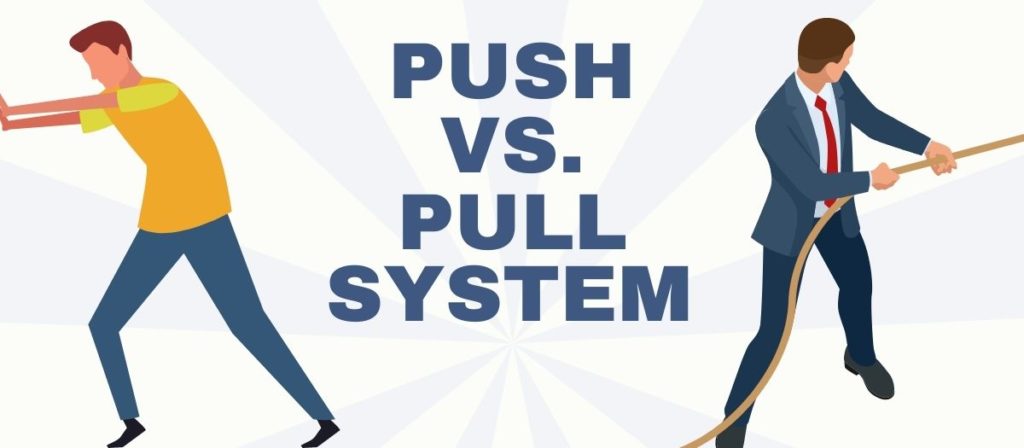In today’s volatile supply chain landscape, manufacturers can no longer rely solely on forecasting and traditional ERP/MRP systems to drive production. The ability to rapidly sense and respond to real-time changes in supply, demand, and operational constraints is critical for resilient manufacturing.
This is where smart factory production monitoring solutions play a pivotal role. Systems like Mingo Smart Factory provide the real-time visibility to achieve a true push/pull strategy. Supply chain agility comes from the ability to automate data flows between suppliers, customers, and your operations team.
Production Monitoring: The Eyes and Ears of Agile Manufacturing
At its core, production monitoring digitalizes your operations by capturing live data flows from machines, processes, quality checks, and more. This level of automation and granular transparency is key to enabling push/pull production dynamics.

Pull supply chain strategy relies on clear communication so that manufacturers can request materials as they need them. Smart monitoring provides accurate, up-to-the-second visibility into available capacity, inventory/WIP positions, quality performance, and more. Rather than running production blindly based on forecasts and plans, manufacturers can synchronize with actual demand signals occurring downstream. Automated processes adjust run rates, staffing, material pulls and other parameters responsively.
Push supply chain strategy depends on reliable scheduling of materials from the supplier. Monitoring unlocks the ability to see and respond to disruptions or shortages as they occur to avoid long restock periods. For example, if a material shortage hits, production can instantly toggle into a new push model for surplus items in your value stream to consume available inventory and components. This is enabled through live awareness of plant statuses and material traceability data.
Contrast this to the brittle, error-prone reality of relying on outdated, manually-compiled data to drive supply/production decisions. Many manufacturers are operating based on assumptions and running production “blind” based on historical data and what they THINK demands will be. This could manifest as stockpiling unnecessary inventory, leaving capacity underutilized, wasting materials or missing delivery commitments. True push/pull agility is not possible without smart factory monitoring visibility.
Creating the Optimal Push/Pull Supply Chain Balance
Of course, not all production is suited for a pure push or pull supply chain strategy at any given time based on constraints. Smart factory monitoring combined with advanced planning, scheduling and inventory management capabilities enables manufacturers to find the right balance.
For example, production can be pulled by demand signals and optimized to responsively consume inventory using lean manufacturing practices. While preparing for an upcoming product launch or large order spike, monitoring can help anticipate and proactively push businesses to resupply ahead of time to build strategic inventory buffers. The system automatically optimizes scheduling and ordering based on both push and pull conditions.
Additionally, smart monitoring illuminates opportunities to boost sustainability through stronger supplier integration and transparency. Suppliers can access monitoring data to see real-time consumption and adjust materials shipments dynamically. A good production monitoring system should act as an extension of your current operation.
Monitoring also improves management of surplus WIP/finished goods situations that often arise during supply chain disruptions. Real-time visibility into inventory across multiple facilities combined with transportation management capabilities allows dynamically load-balancing production and distribution channels to burn down excess stocks. After all, if it’s sitting in the warehouse, then it’s not contributing to your bottom line.
These types of more resilient, hybrid push/pull supply chain models can flex to your unique combination of constraints, priorities, variability, and sensitivities. But they require the production awareness and connectivity that monitoring solutions provide to be viable. At the end of the day, the right production monitoring system should make your process easier, be fast to set-up and demonstrate a return on value within the first three months.

Looking Ahead to Industry 5.0
As smart factory solutions evolve along with Industry 5.0 trends, push/pull manufacturing dynamics will become even more flexible and collaborative. Emerging areas like the industrial internet of things (IIoT), 5G networking, edge/cloud computing and AI-powered adaptiveness will usher in new abilities:
- Self-optimizing supply chains that automatically re-balance and re-route materials/production intelligently based on conditions
- Shared data pipelines enabling entire supply ecosystems to synchronize and adapt as a unified organism
- Advanced learning capabilities that continuously refine planning models based on analysis of real-time monitoring data streams
The end result will be even tighter integration of monitoring, planning and execution as rigid processes morph into living, breathing, cognitive supply networks. Supply chains will be inherently more resilient through autonomous responsiveness to disruptions and decentralized intelligence.
Of course, even exponential advancements in technology won’t eliminate the fundamental laws of limited resources, variability and Murphy’s Law. But by harnessing the full power of smart factory monitoring and connected data flows, manufacturers will continue gaining higher levels of supply chain flexibility and resilience. Watch a demo of Mingo Smart Factory’s production monitoring system.


